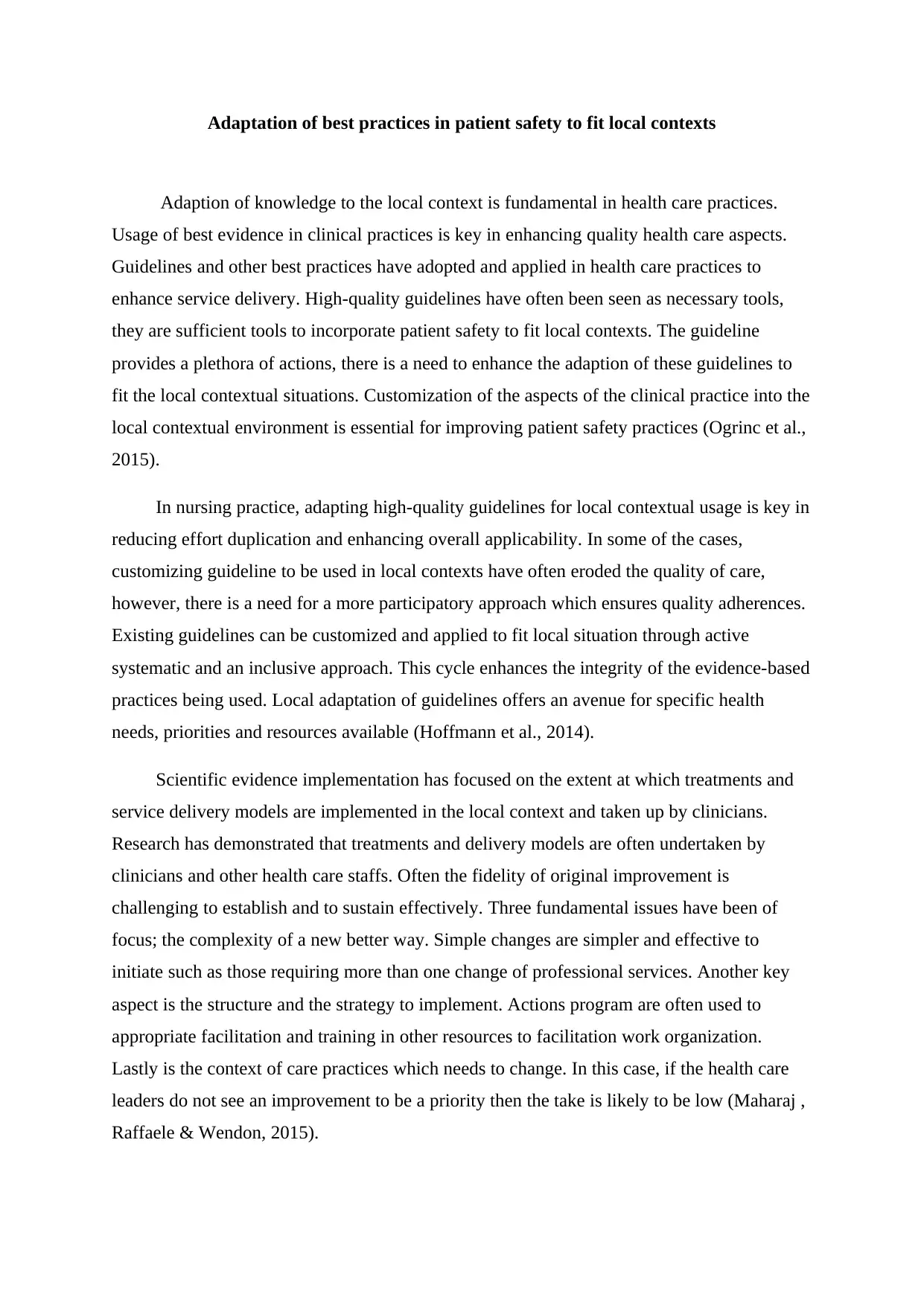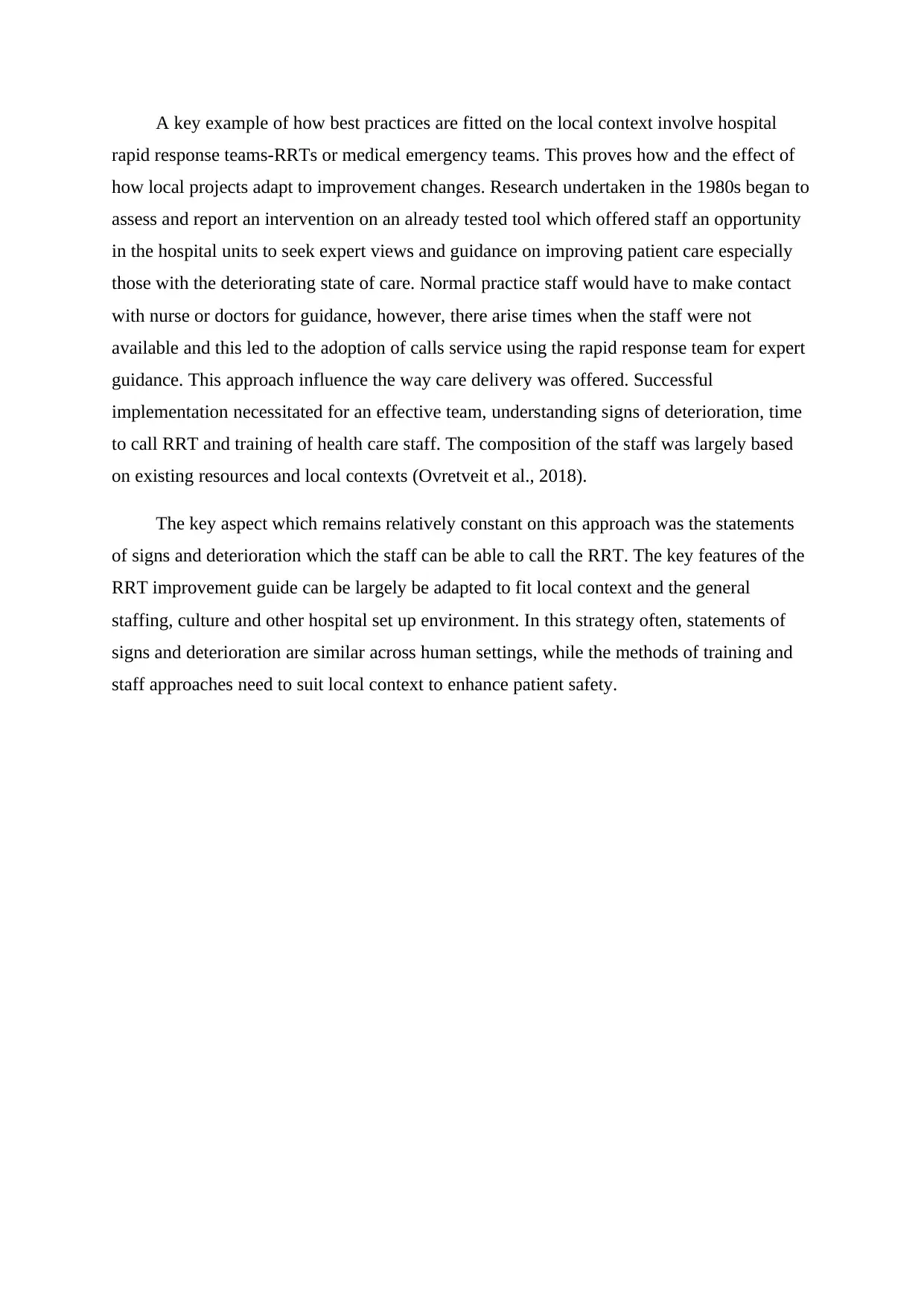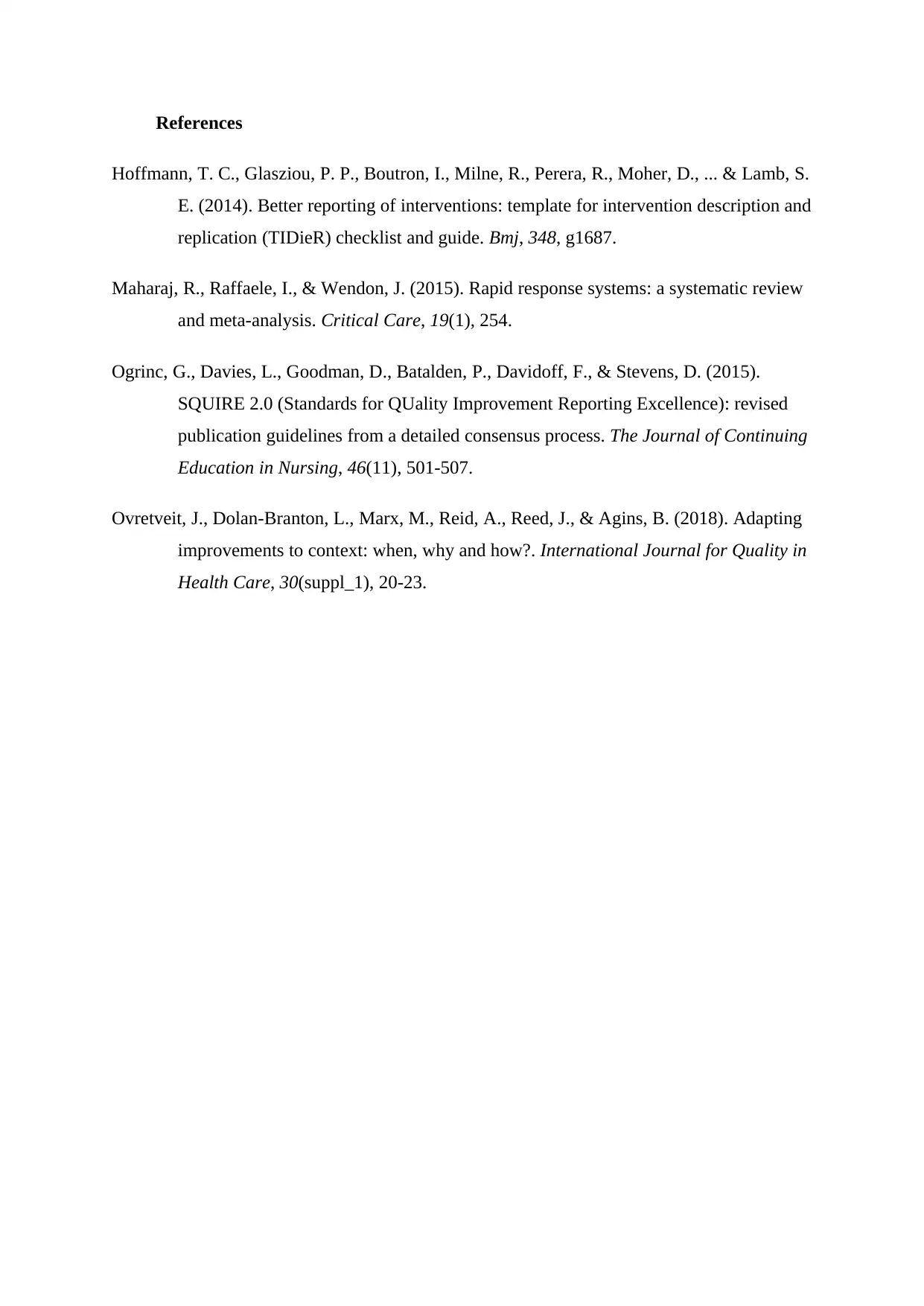Adaptation of Best Practices in Patient Safety to Fit Local Contexts
VerifiedAdded on 2022/12/18
|4
|934
|31
Report
AI Summary
This report focuses on the crucial adaptation of patient safety best practices to fit local contexts in healthcare settings. It emphasizes that while high-quality guidelines are essential, customizing them for specific environments is key to improving patient safety practices and reducing effort duplication. The report highlights the importance of a participatory and inclusive approach to ensure the integrity of evidence-based practices and address specific health needs, priorities, and resources available locally. It also discusses the significance of considering the complexity of changes, implementation strategies, and the context of care practices. The report uses the example of hospital rapid response teams (RRTs) to illustrate how local projects can adapt to improvement changes, showcasing the importance of effective teams, understanding signs of deterioration, and training healthcare staff. The core elements of the RRT improvement guide, such as the statements of signs and deterioration, can be adapted to fit local contexts, taking into consideration the staffing, culture, and hospital setup. The report concludes by stressing the need for methods of training and staff approaches to suit local context to enhance patient safety.
1 out of 4











![[object Object]](/_next/static/media/star-bottom.7253800d.svg)